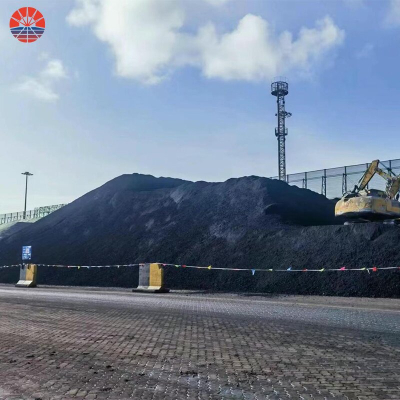The Usage Of Ferrosilicon
Ferrosilicon is an alloy made of iron and silicon with varying silicon content, usually ranging from 15% to 90%. It is commonly used in various industries due to its unique properties. Here are some of the primary uses of ferrosilicon:
Steel production: Ferrosilicon is a vital additive in the production of steel. When added to molten iron, it helps to remove impurities and convert it into steel. The silicon in ferrosilicon also improves the steel's strength, hardness, and resistance to corrosion.
Foundry industry: Ferrosilicon is used as a deoxidizer and an inoculant in the production of cast iron. It aids in the removal of oxygen from the molten iron, preventing defects in the final casting.
Ferroalloy production: Ferrosilicon serves as a raw material in the production of various ferroalloys, such as ferromanganese and ferrochrome. These alloys are essential for enhancing the properties of different metals.
Magnesium production: In the production of magnesium and magnesium alloys, ferrosilicon is utilized to remove sulfur and oxygen impurities, improving the quality of the final product.
Ductile iron production: Ferrosilicon is used in the production of ductile iron, also known as nodular iron. It provides the necessary elements for the formation of graphite nodules, enhancing the material's ductility and strength.
Dense medium separation: Ferrosilicon is utilized as a dense medium in the process of separating minerals based on their density in mineral processing and mining industries.
Welding applications: In welding, ferrosilicon is used as a deoxidizing agent and a heat conductor in certain types of welding processes.
Inoculant in iron casting: Ferrosilicon can act as an inoculant to promote graphite formation in gray iron casting, improving its mechanical properties.
It's worth noting that the silicon content in ferrosilicon can vary depending on its intended application. The ratio of silicon to iron determines the alloy's specific characteristics and functionality in different industrial processes.
The Production Process Of Ferrosilicon
The production process of ferrosilicon actually involves the reduction of silica (SiO2) and iron (Fe) sources, rather than iron oxide. Here's the correct production process for ferrosilicon:
Raw materials preparation: The primary raw materials used in ferrosilicon production are silica (usually in the form of quartz) and high-purity iron sources, such as iron ore, iron scrap, or steel slag. These materials are carefully selected and blended to achieve the desired silicon and iron content in the final ferrosilicon alloy.
Charging the submerged arc furnace: The blended raw materials are charged into a submerged arc furnace. This furnace is a refractory-lined, closed vessel designed to withstand high temperatures and maintain a controlled atmosphere.
Heating and reduction: An electric current is passed through electrodes that are submerged in the raw material mixture within the furnace. The electric current generates an electric arc, heating the charge to temperatures above 2,000 degrees Celsius (3,632 degrees Fahrenheit). The high temperature causes a reduction reaction to take place:
SiO2 + 2C → Si + 2CO
Fe2O3 + 3C → 2Fe + 3CO
In these reactions, carbon (C) from the electrode materials acts as the reducing agent, extracting oxygen from silica and iron oxide to produce silicon (Si), iron (Fe), and carbon monoxide (CO).
Alloying and tapping: As the reduction reactions proceed, molten silicon and molten iron are formed. The silicon and iron combine to create the ferrosilicon alloy. The proportions of silicon and iron are controlled to achieve the desired composition. Once the desired alloy composition is reached, the molten ferrosilicon is tapped from the furnace into ladles or molds for further processing.
Cooling and solidification: The tapped ferrosilicon is allowed to cool and solidify in the molds. After solidification, the material is broken into smaller pieces called "ingots" or "lumps."
Crushing and sizing: The solidified ferrosilicon is crushed into smaller sizes using crushers and then screened to obtain the desired particle size distribution. Different grades of ferrosilicon may have varying size specifications depending on their intended applications.
Packaging and distribution: The final ferrosilicon product is packaged and shipped to various industries that utilize it for different applications, such as steelmaking, foundry, and other industrial processes.
This process provides a more accurate description of the production of ferrosilicon, and it's essential to follow the correct reactions involving silica and iron during the reduction process to obtain the desired alloy with the appropriate silicon content.
Specification
Quality inspection certificate of finished product | |||
Product name | Ferro Silicon | Batch No. | ZC2023-06-13 |
Sampling Site | / | Product specifications | / |
Acceptance date | 2023.06.13 | Report date | 2023.06.14 |
Test items | SH/T 0313-92 | Test results | |
Appearance | This product should be black solid | ||
Si | 75.32 | ||
c | 0.11 | ||
P | 0.03 | ||
s | 0.014 | ||
A1 | 0.77 | ||
Conclusion | Product conforms to specification. | ||








